

MAURITIUS & LE MORNE BRABANT
THE LUSH TROPICAL FEEL OF THE SOUTHERN TIP OF MAURITIUS IS HIGHLIGHTED AS JUST ONE
OF THE MANY RICH EXPERIENCES OF THE ISLAND
AN AERIAL REVIEW PHOTOGRAPHED BY DAVID DODDS
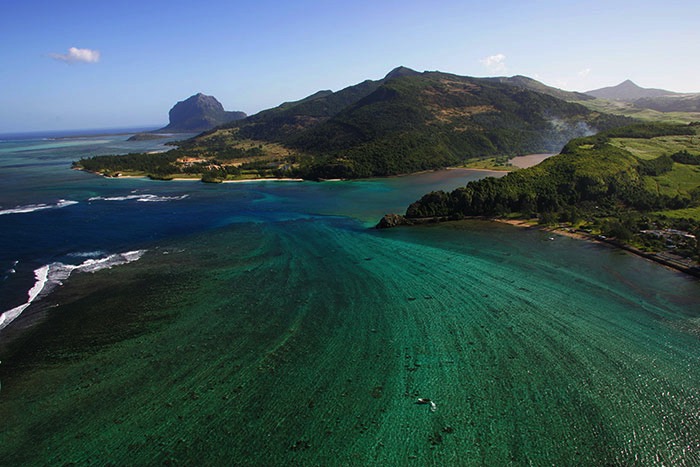
Tropical lushness and valiantly blue seas are the well known trade mark leading visitors to this Indian Ocean Island.
At the southern tip, Chamarel Waterfall nestles inland amongst the sugar cane, with the resulting river leading down to Baie du Cap in the Choisy region and the corner view round to Le Morne Brabant.
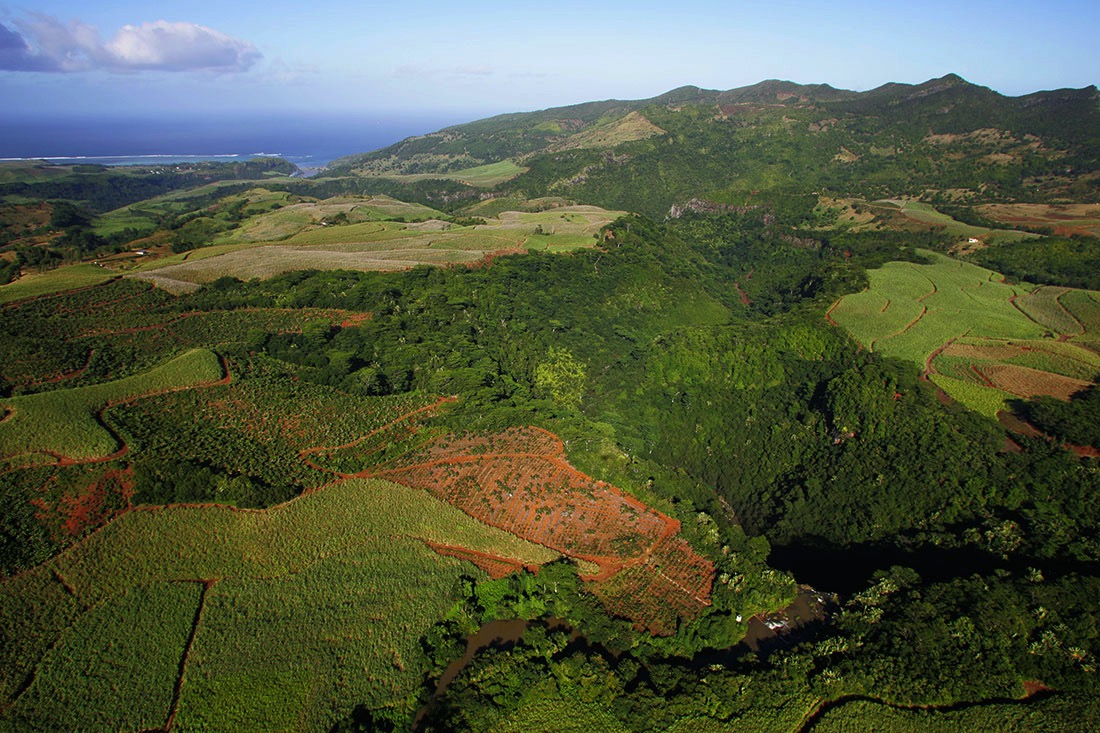
Directly overhead of Chamarel Waterfall
The area around Le Morne Brabant hosts the Black River National Park, of which the 272 foot Chamarel Waterfall is just one of the sights worth a visit. There are numerous sightseeing viewpoints of the rolling mountains looking across to Le Morne, with restaurants hosting creole cuisine.
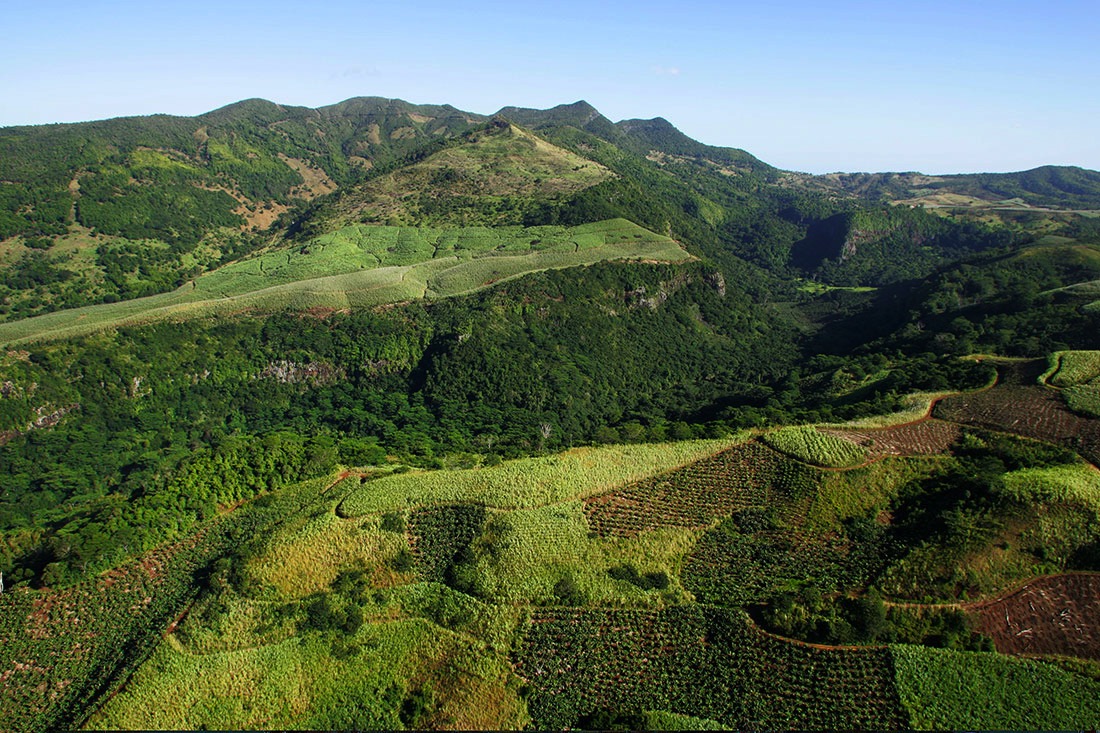
Intense valleys and true tropical forestation.
Public access and new golf earthworks behind; a drawcard for tourists.
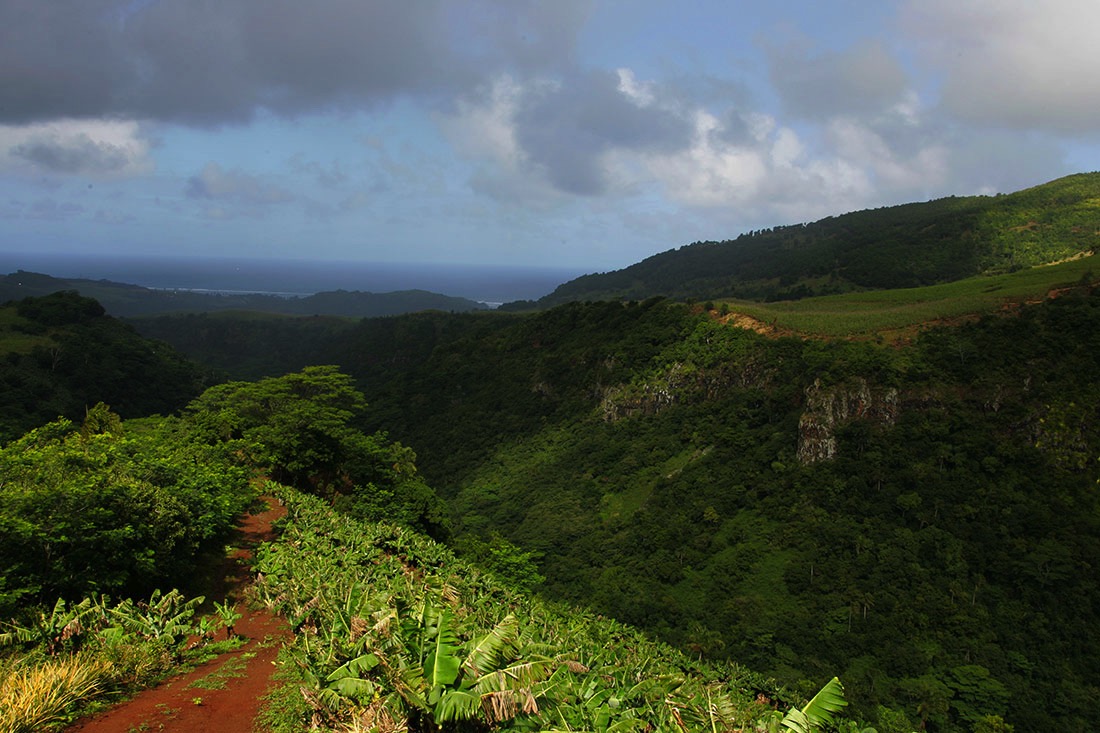
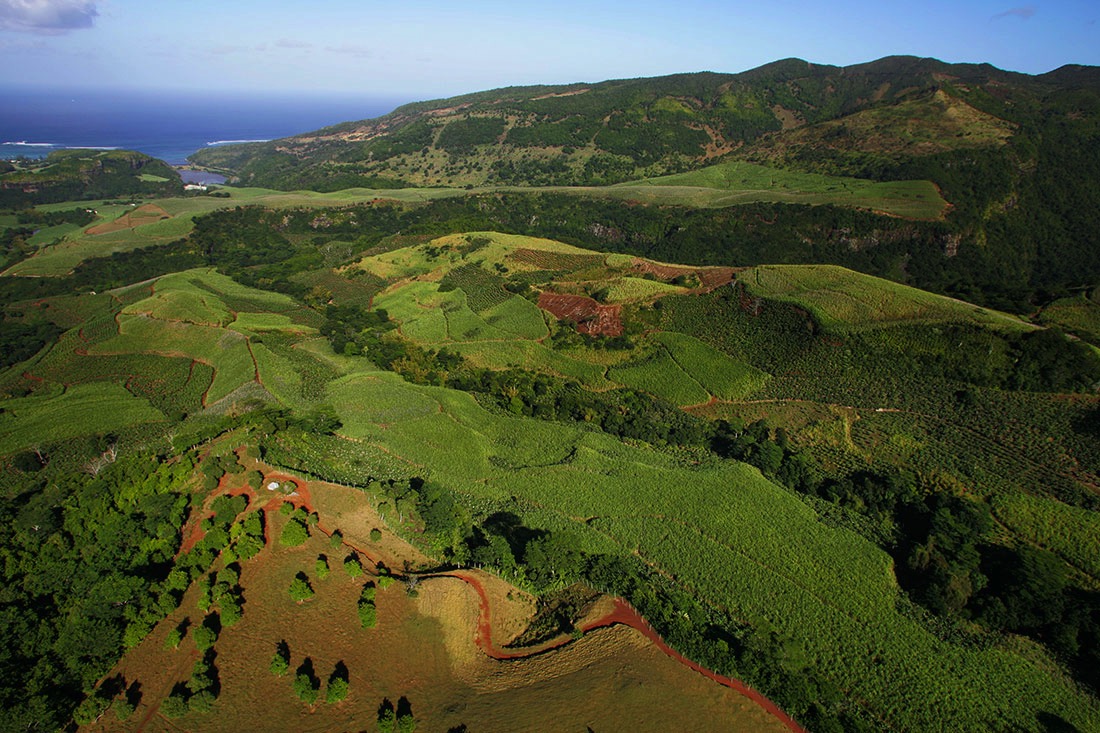
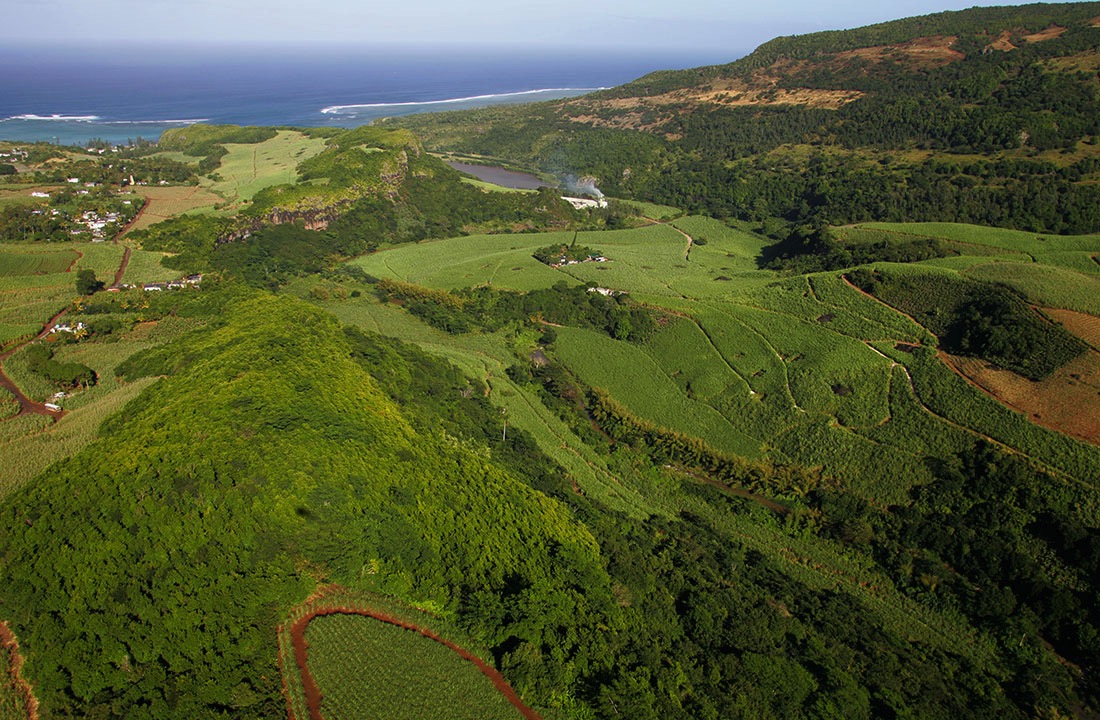
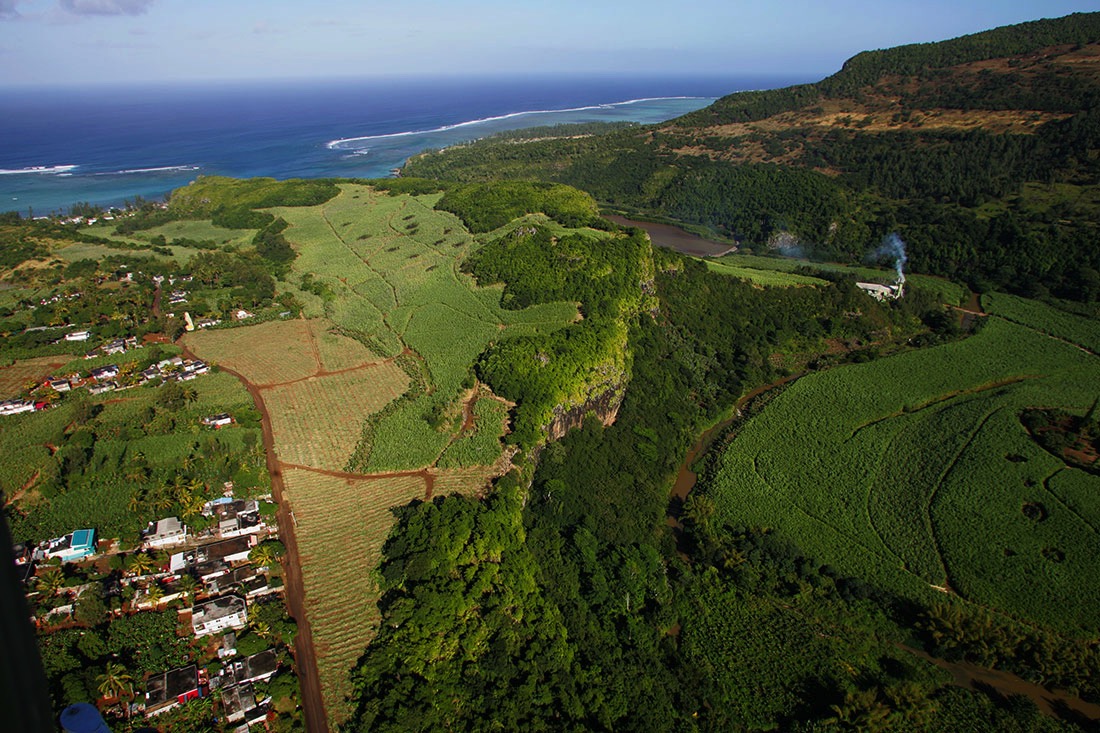
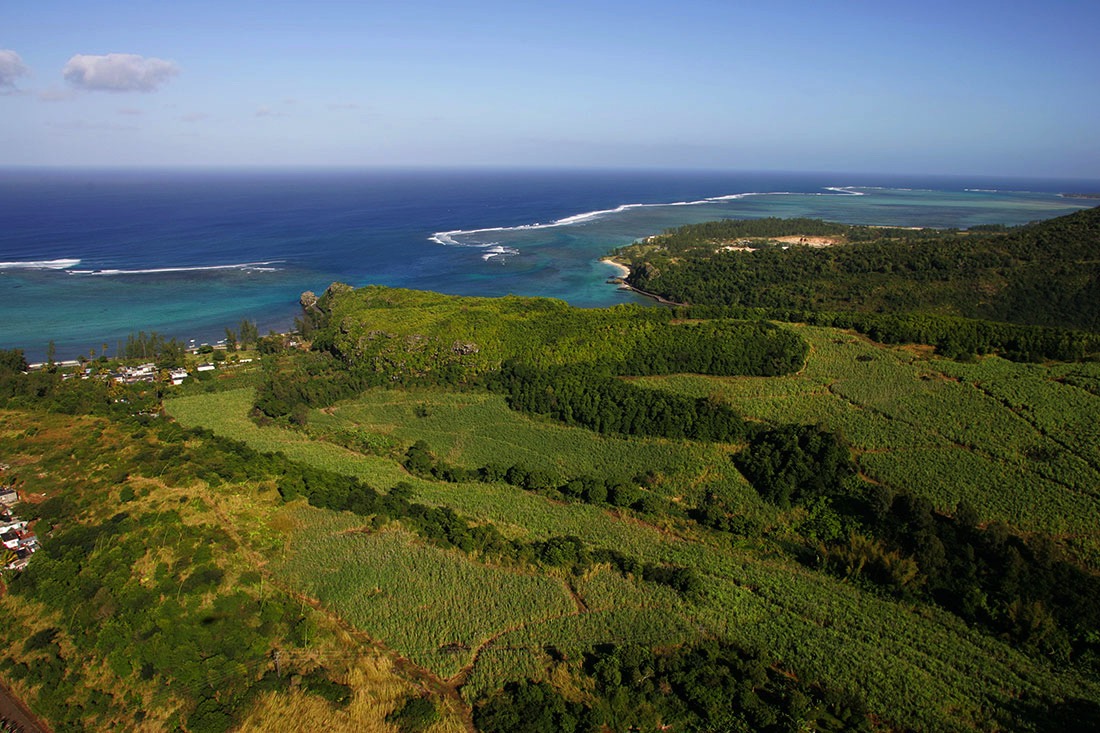
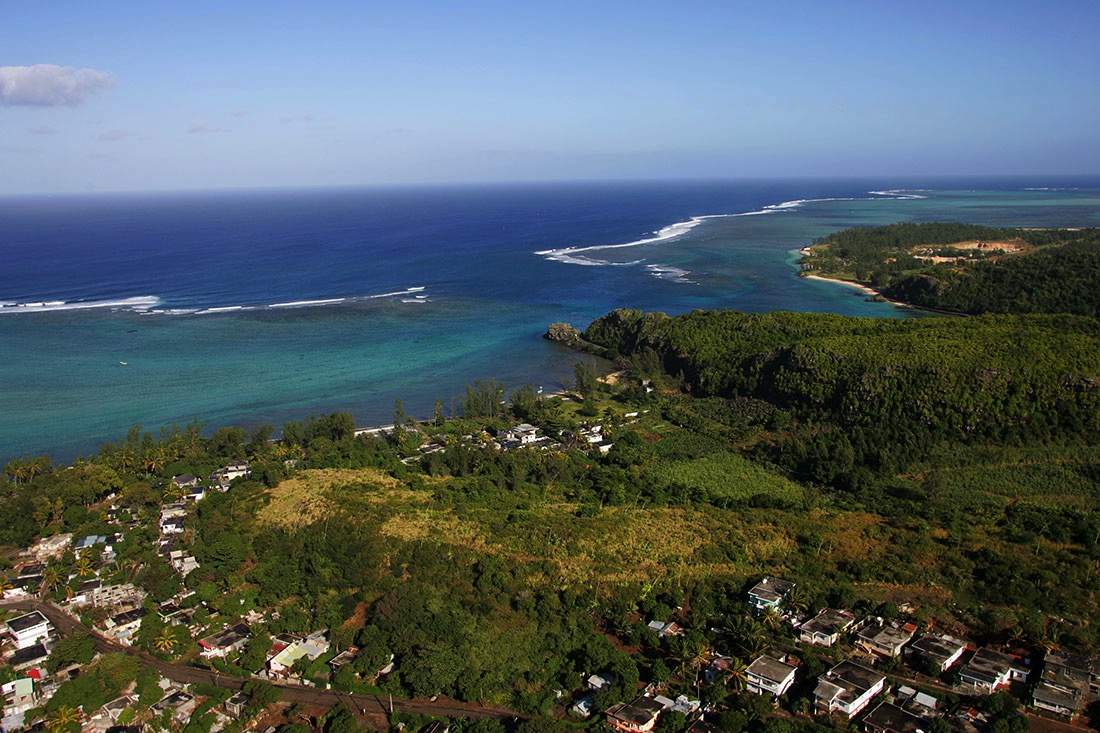
The small town of Baie du Cap hoves into view as the Riviere du Cap heads to empty into the sea.
Baie Du Cap at the river mouth.
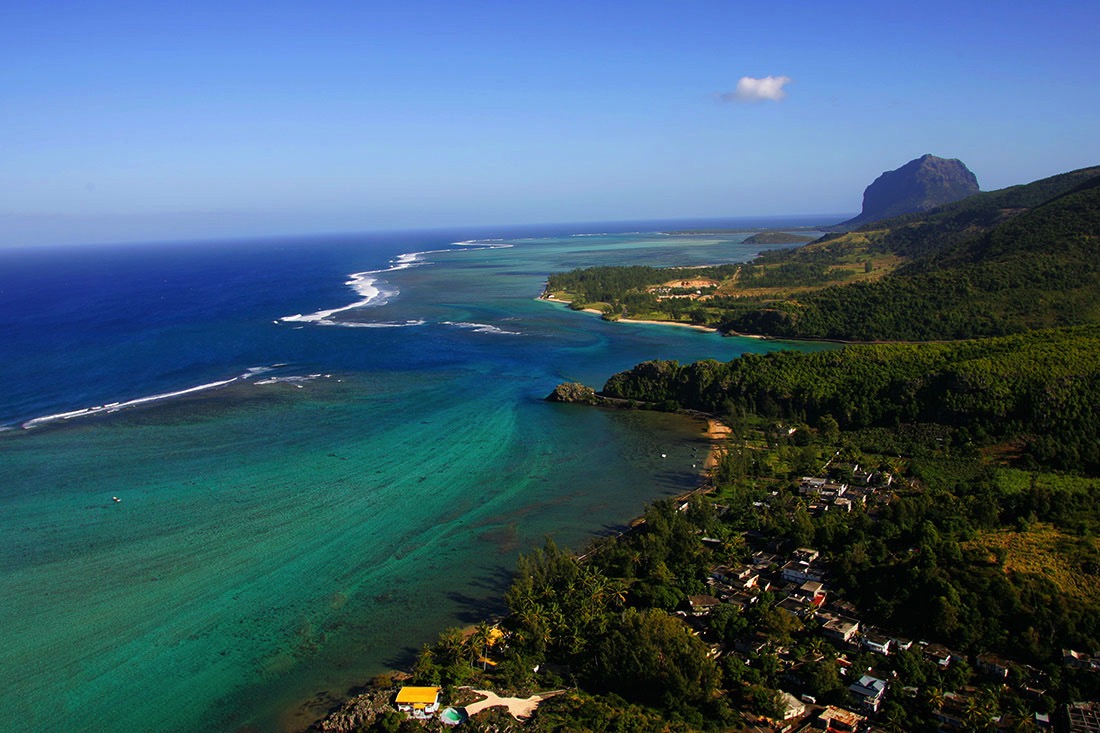
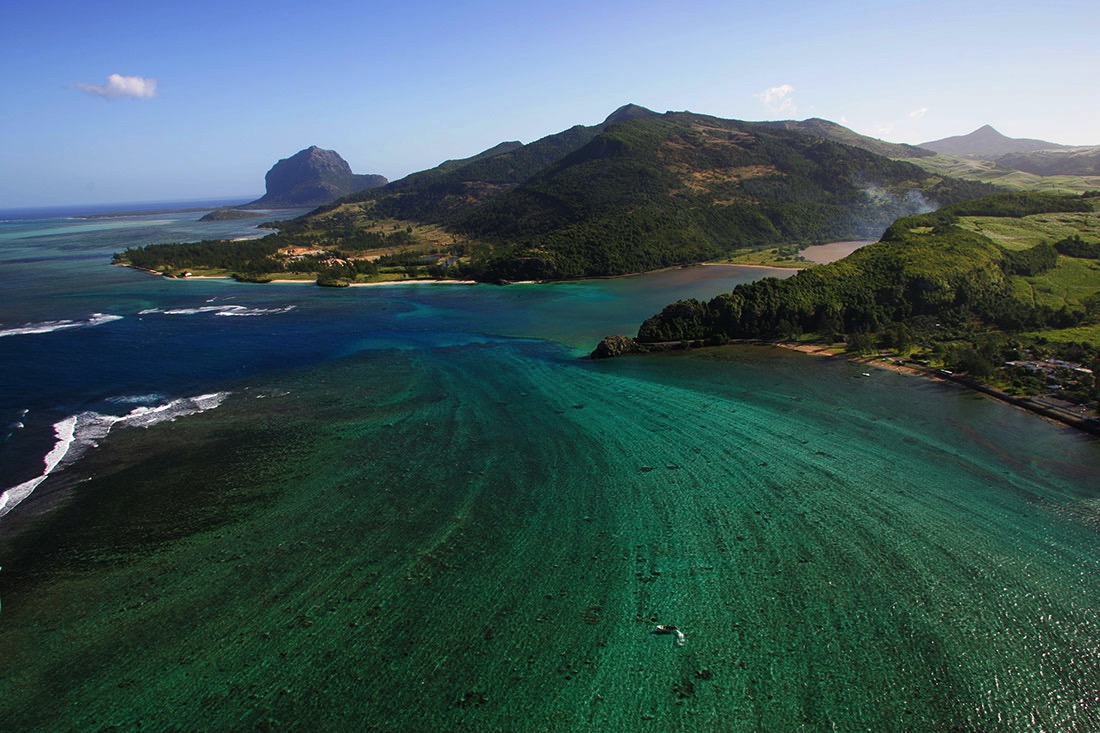
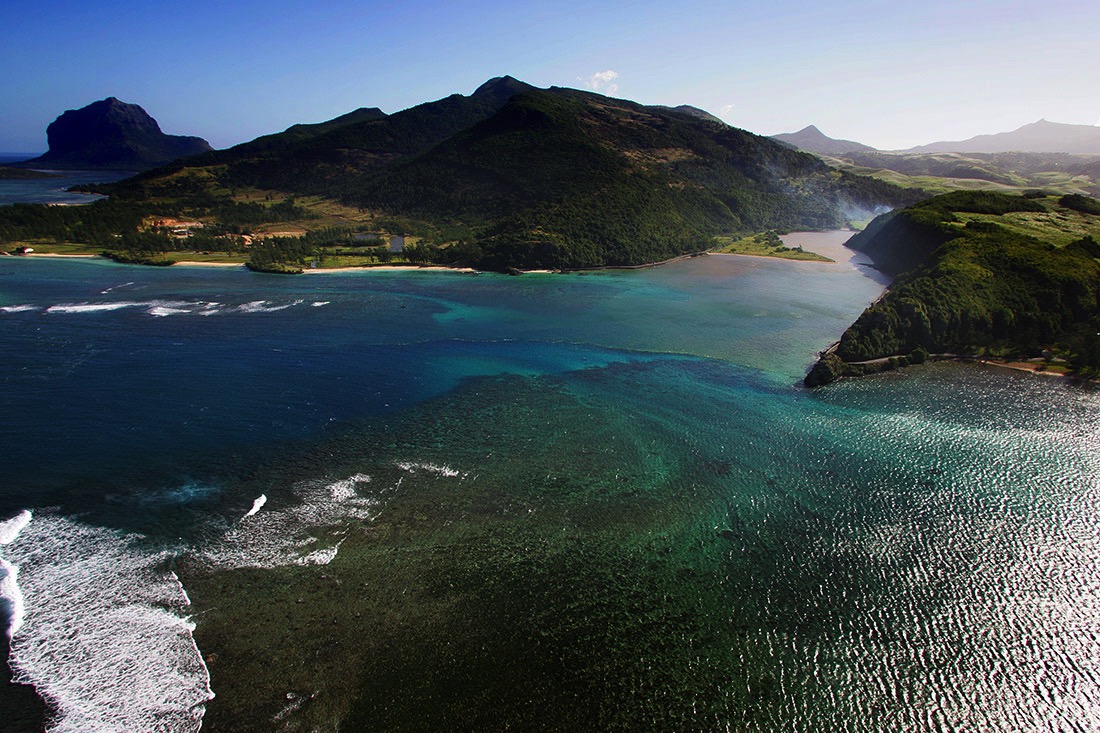
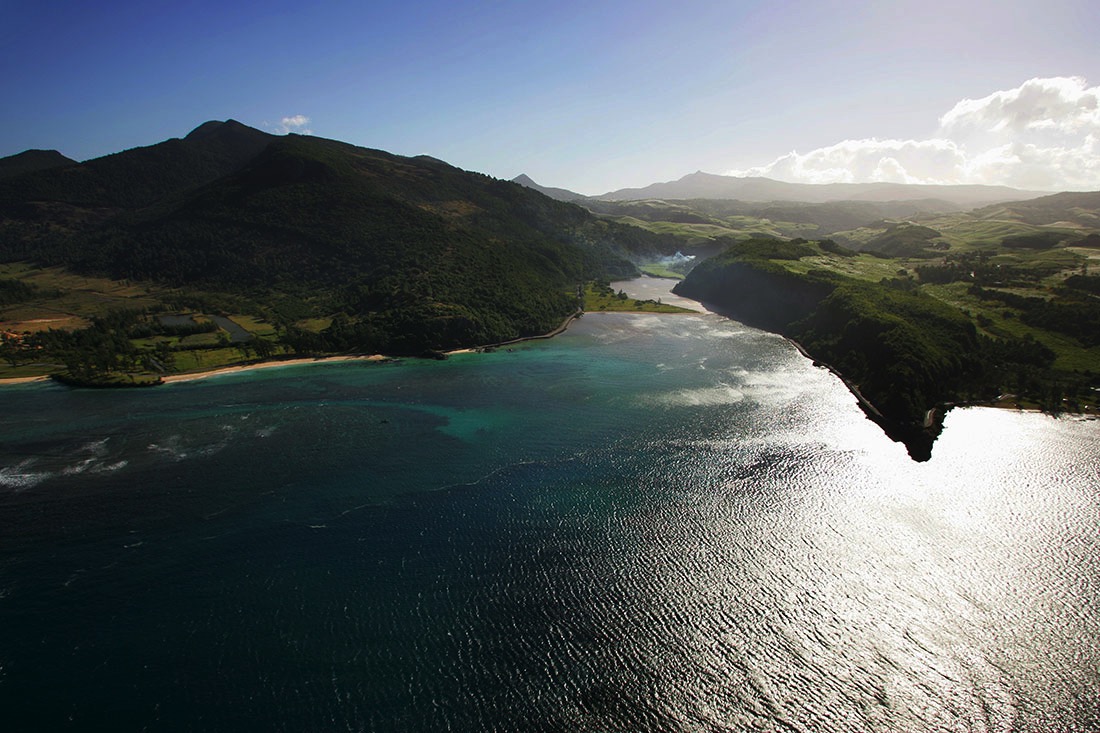
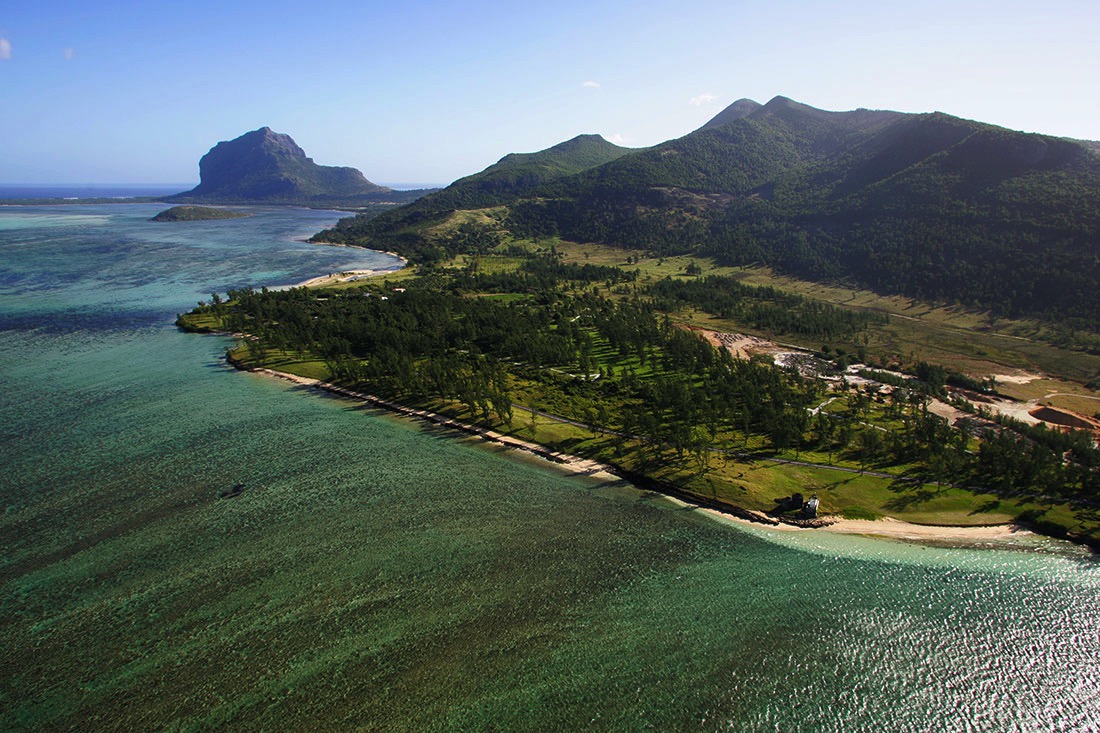
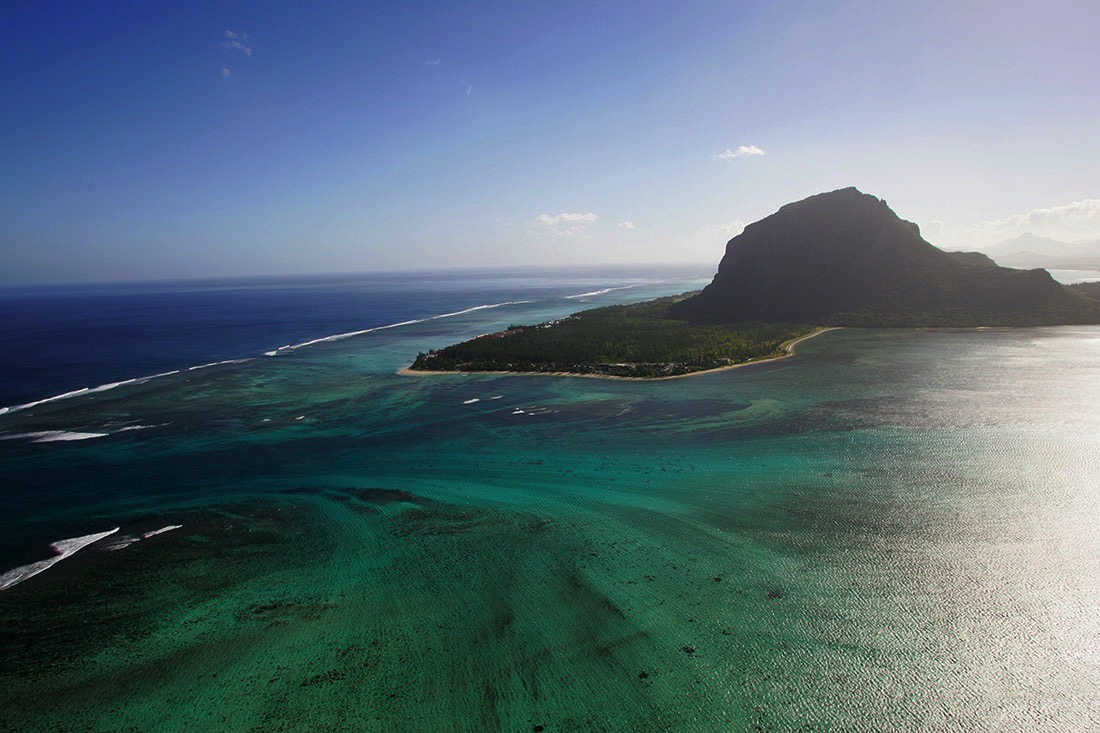
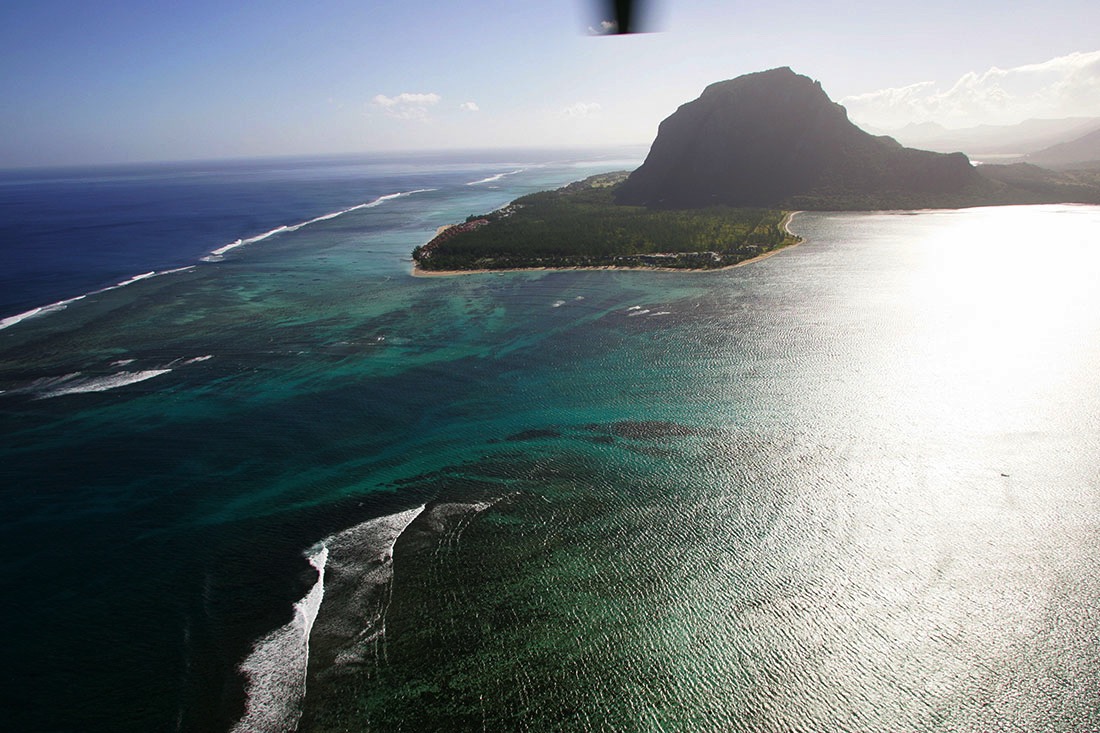
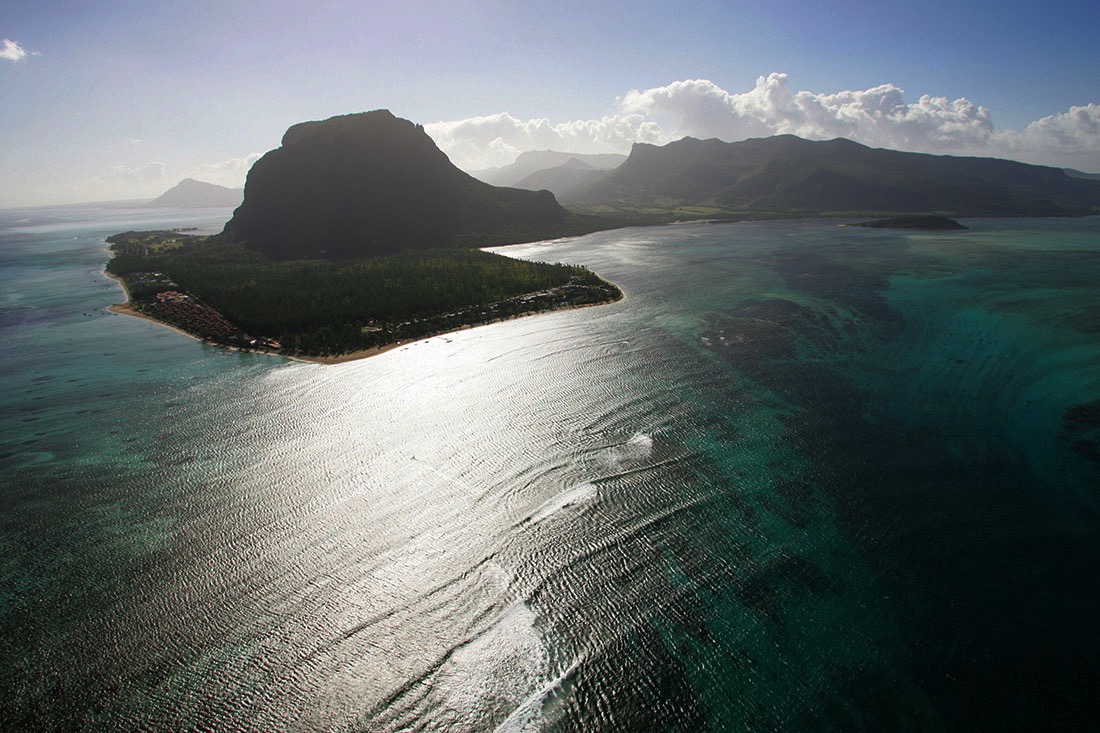
First signs of deep water at La Prairie reef on the exit of Riviere Du Cap.
The basalt granite cliffs of Le Morne Brabant are viewed in the distance.
On the approach to Le Morne Brabant itself, these three photographs indicate the scale of a feature popularly labelled by the locals as 'the undersea waterfall'.
It is an optical illusion created by the reefs on each side producing a whitewater impression of water cascading on down into a deep chasm. The concept of deep water is indeed precipitous, as the whole island of Mauritius is a giant erupted volcano, with many other smaller volcanic features, rock outcrops and eruption areas inland.
The first of the outstanding accommodation options lie in the shadow of the granite cliffs.
Hotel Riu Creole, Hotel Riu Le Morne, and the St. Regis Resort host many of the attractions of beach life, great cuisine and spa facilities, along with the beach corner being a kite surfing paradise.
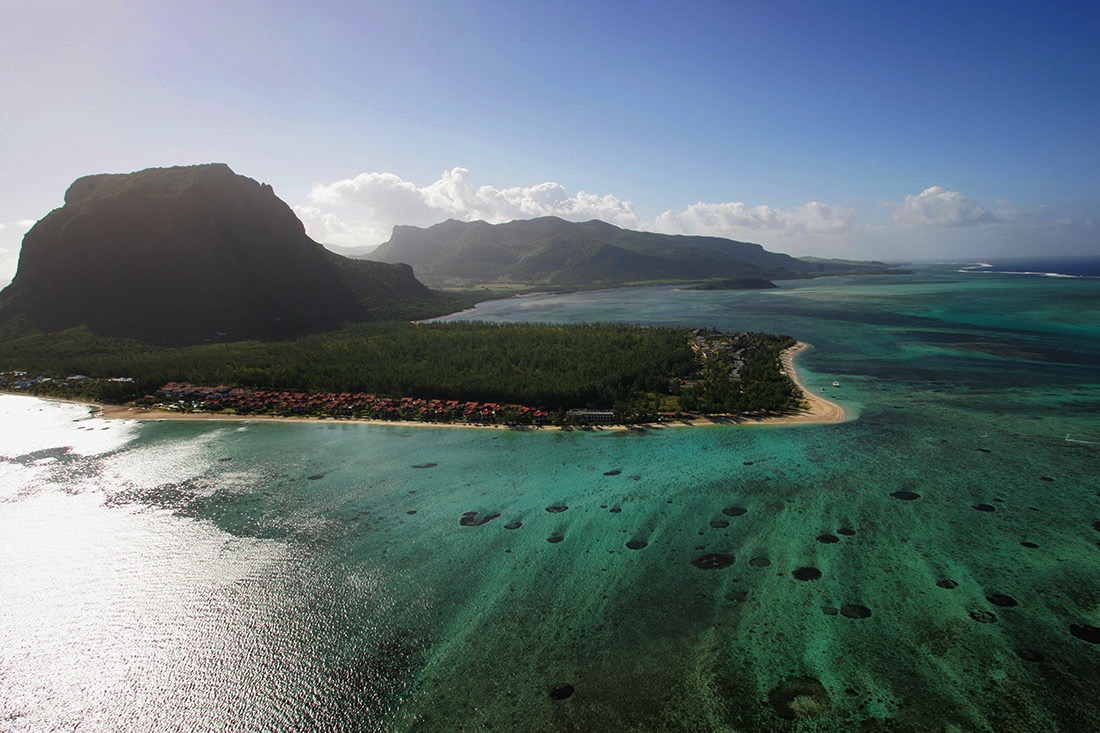
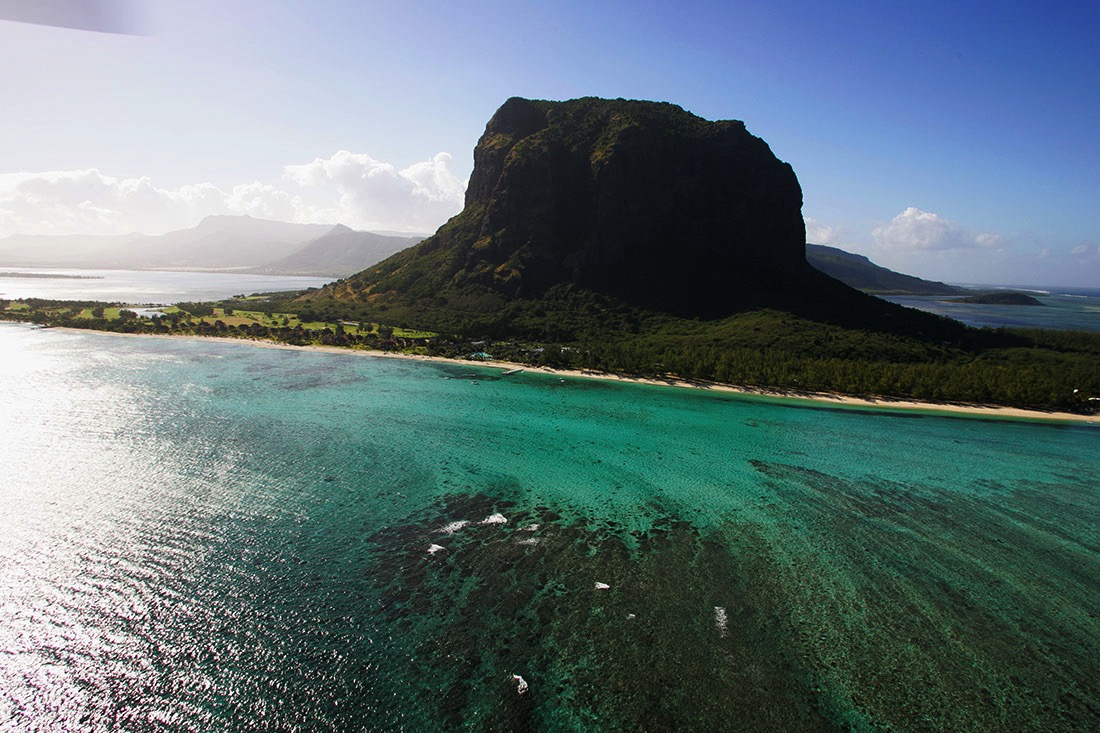
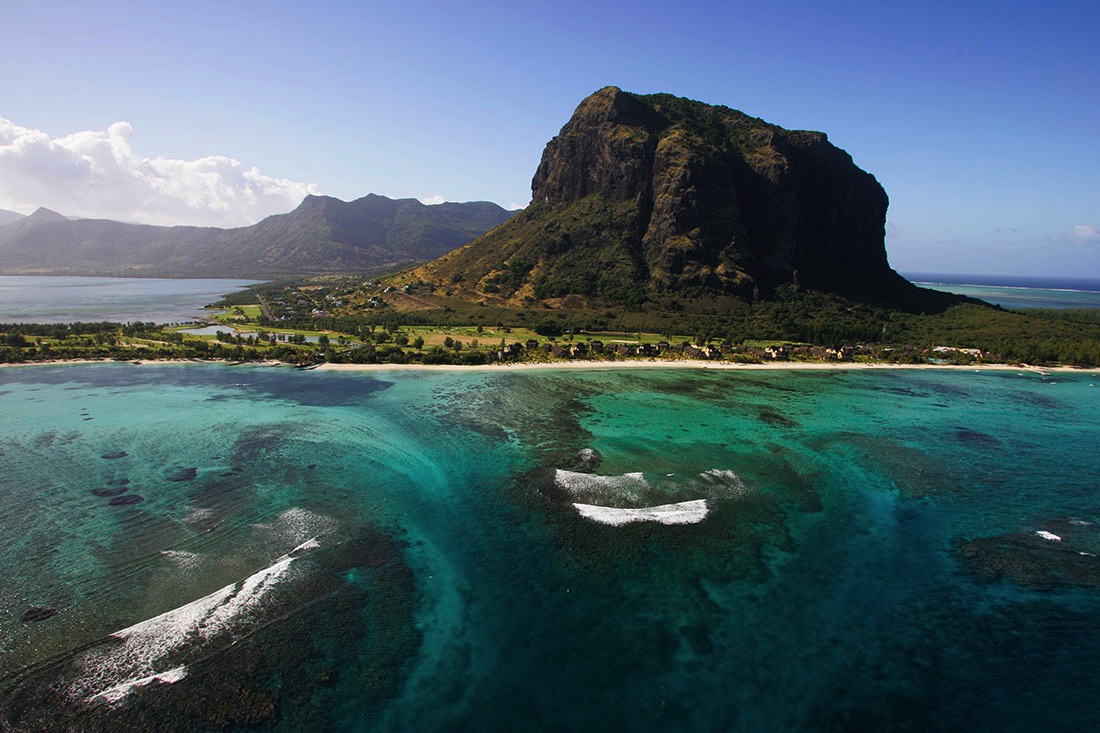
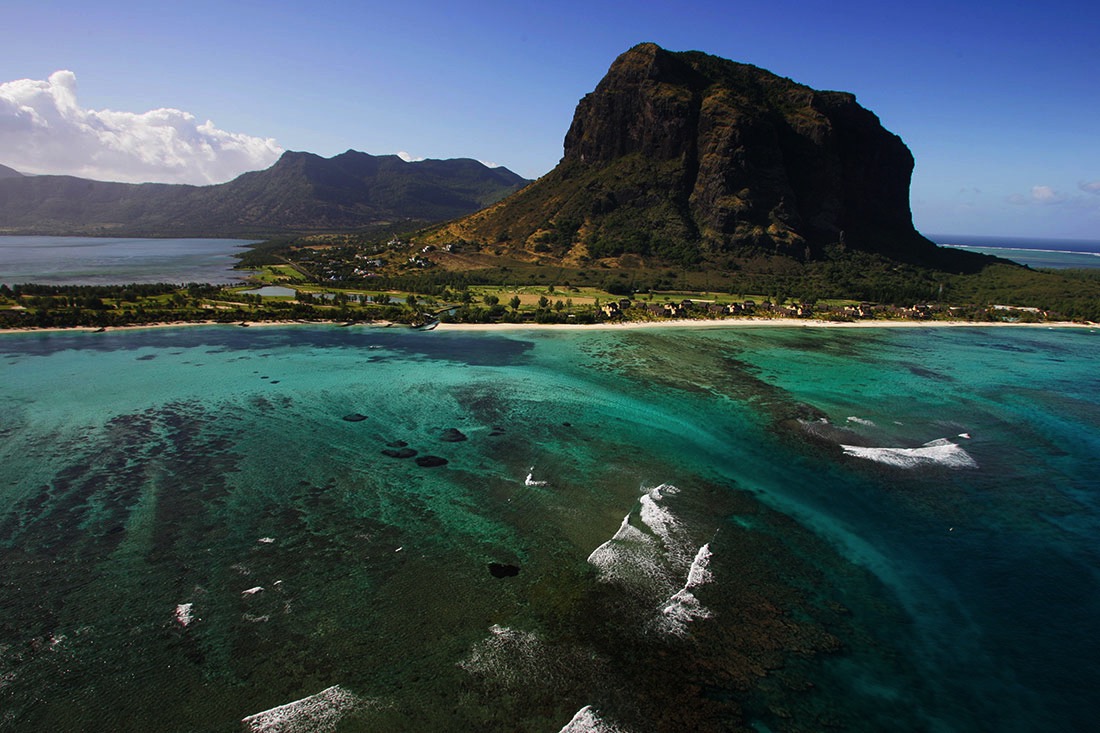
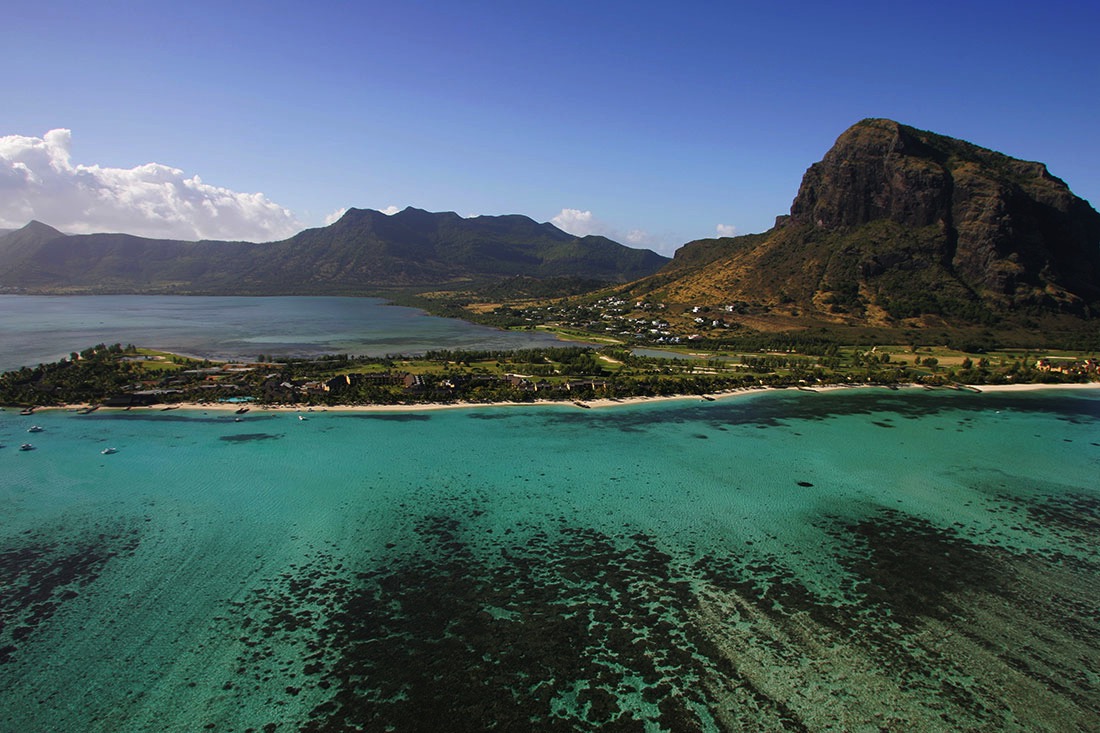
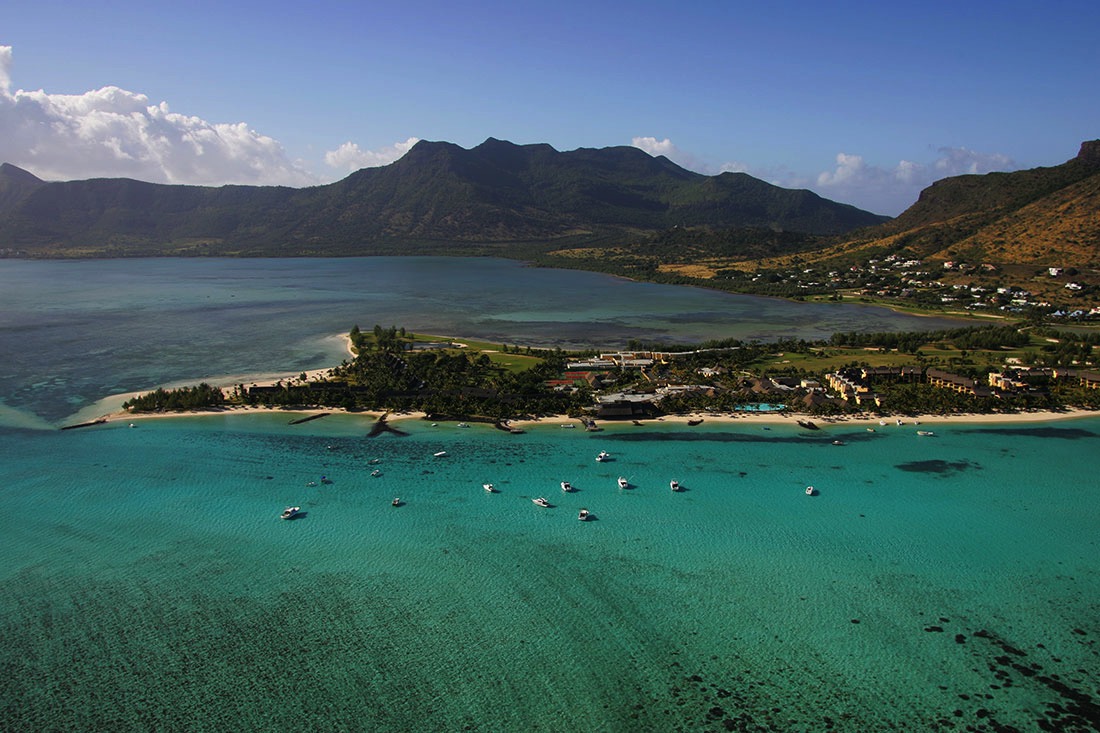
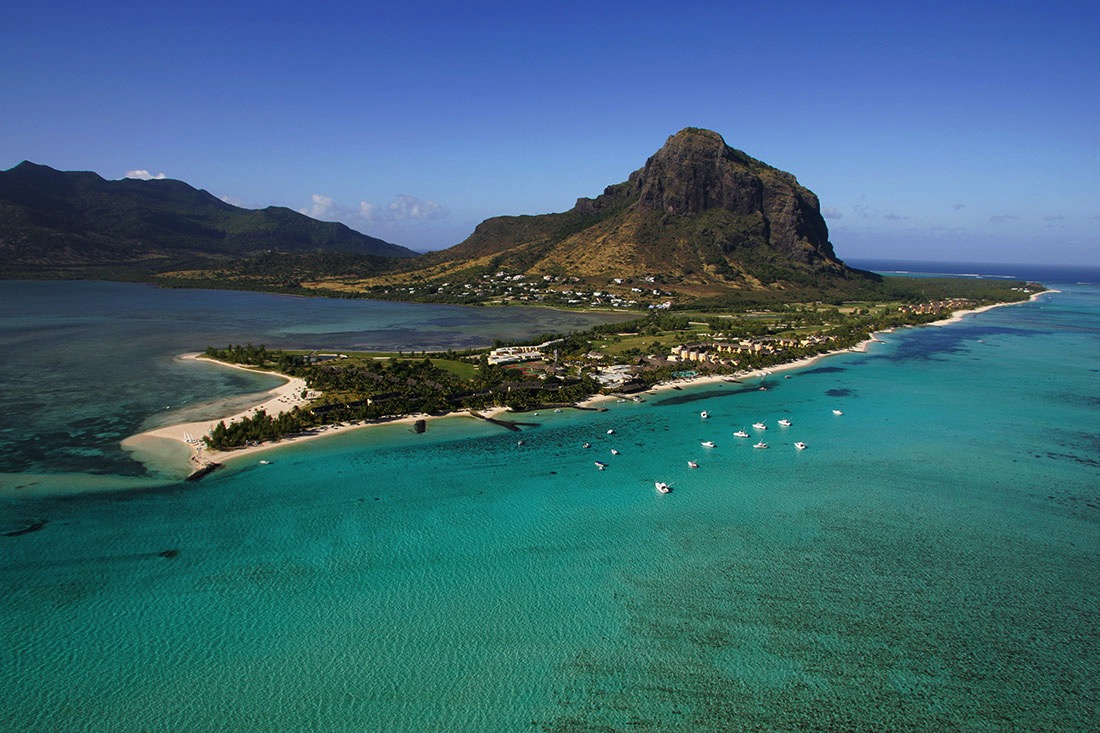
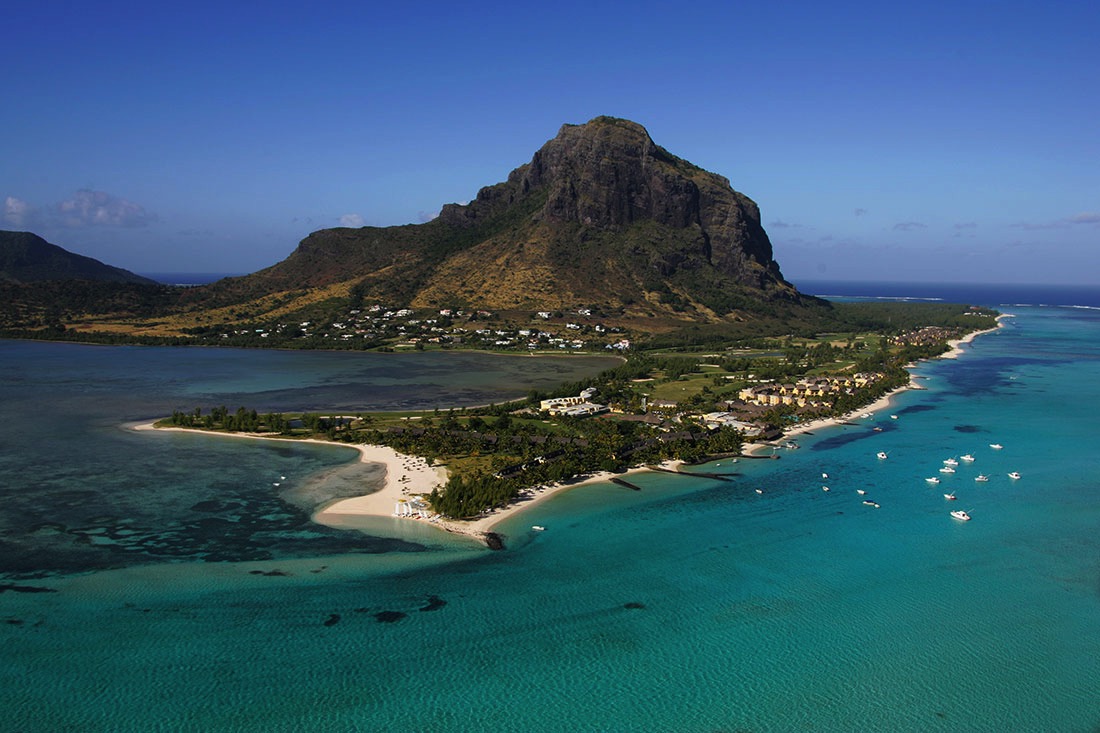
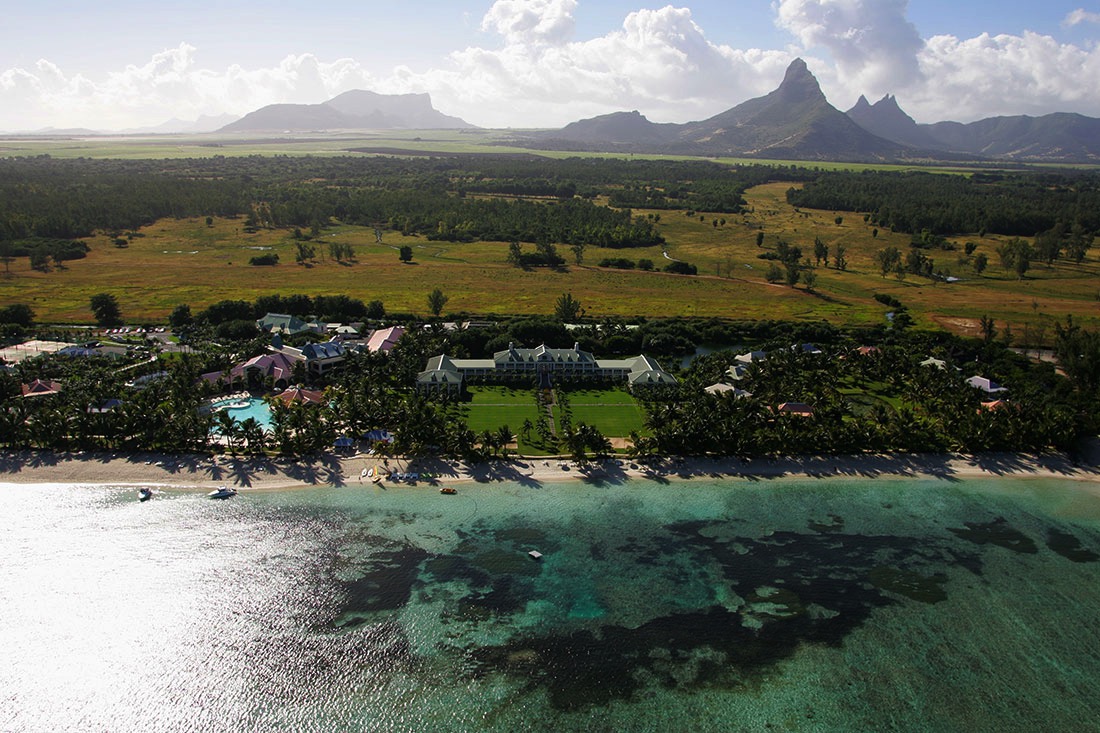
Le Morne Brabant Mountain was submitted to the candidate list of the World Heritage sites in 2003. In 2008, the nomination process concluded when UNESCO inscribed the site on the World Heritage List despite a lack of any physical evidence to corroborate the status and has newly created monuments to the slaves at the base of the rock greatly benefiting the ever-growing Mauritian tourism industry.
The mountain itself, with a summit 556 metres (1,824 ft) above sea level, is named after the Dutch East India Company ship Brabant that ran aground here on 29 December 1783 on the cliffs.
The peninsula is steeped in cultural “myth and legend” in the early 19th century as a suggested refuge for runaway slaves and maroons. After the abolition of slavery in Mauritius, on 1 February 1835 it is rumored that a police expedition was despatched there ostensibly to inform the slaves that they had been liberated and were now free men and women. The arrival of the police at the base of the mountain was (according to legend) misinterpreted by the slaves who had scrambled to the summit (fearing that they were to be arrested) and subsequently elected to leap to their deaths from the rock and commit suicide by landing in the ocean, rather than be recaptured back into slavery. Since 1987 the date is celebrated (particularly by Mauritian creoles) as the Annual Commemoration of the Abolition of Slavery.
There are many caves and overhangs on the steep slopes. It is also a refuge for two rare plants, the Mandrinette and the Boucle d'Oreille.
Golf facilities are a large part of this end of the Mauritian Island.
Two oustanding Beachcomber hotels, the Dinarobin and Paradis both host extended golf play.
The corner position of Beachcomber Paradis is highly regarded for extended water sports, windsurfing and scuba facilities.
Inland views from the end of Le Morne confirm the peaks of other extensive volcanic mountains.